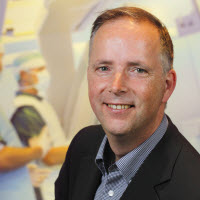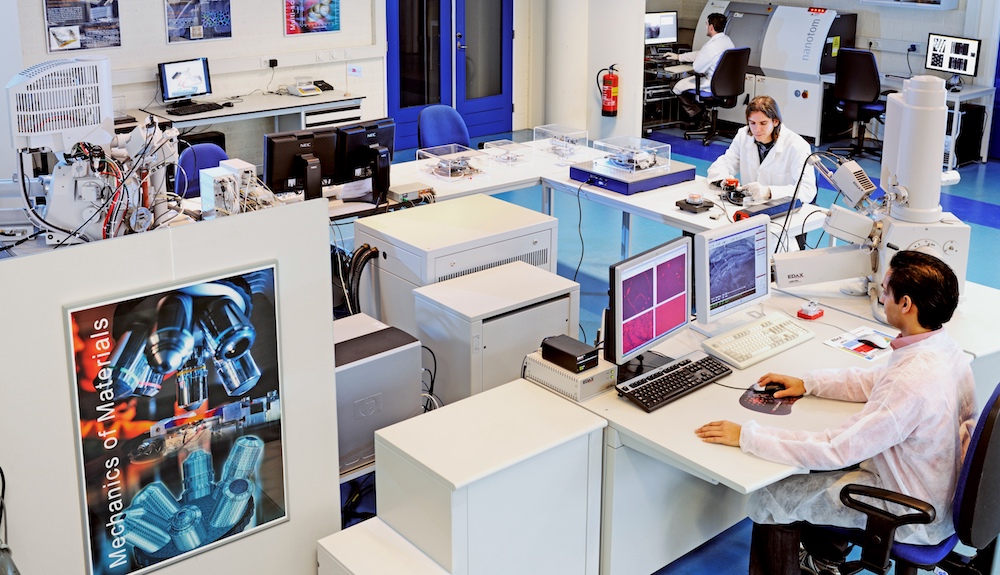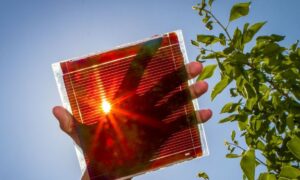(Editor’s note: This post on TU/e’s Flagship partnerships is part of Dispatches’ Tech Tuesday series covering technology and global management in Europe and Asia.)
On the face of it, it seems like a deal too good to be true. Eindhoven University of Technology (TU/e) created its Flagship partnerships with corporations which allow them to use TU/e’s doctoral programs as an external R&D lab, harnessing the brains of some of the top doctoral students and professors in the world.

Dr. Gérôme Friesen, TU/e’s manager for Strategic Industry Alliances
But Flagship is real and it’s working as TU/e and high tech companies look for their competitive advantage in the global War for Talent.
The concept is simple yet innovative … and distinctly Dutch:
Big companies fund top professors for projects in jointly defined R&D roadmaps that attract the best students.
“People only come to you if you have the best professors,” said Dr. Gérôme Friesen, TU/e’s manager for Strategic Industry Alliances.
Corporates and academics all work in intense collaborations to develop new technology, then move those innovations to market faster and more efficiently.
Flagship partner corporations get cutting-edge R&D in the collaboration. TU/e attracts world-class professors as well as students seeking real-world experience working with some of the world’s most innovative companies.
“We show it’s beneficial for both,” said Bert-Jan Woertman, TU/e commercial director. “Less cost, more IP and more talent, so everyone gets better.”

Eindhoven University of Technology
Monetizing and saving costs
Could the Flagship approach work for your company?
It certainly has for a multinational active in lighting.
In two years, 75 student teams working with 45 PhDs, 25 company researchers and 25 TU/e staffers have produced 15 patent applications, 30 invention disclosures and dozens of journal and conference publications. TU/e is ranked No. 1 in the world, co-authoring the most papers with the world’s most innovative organizations, according to Times Higher Education.
The obvious question is, “Have there been home runs?” The short answer is, “Yes, but no one in the Flagship projects will talk about them.” Companies don’t even want competitors to know what industry sectors they’re working in, much less product details.
“We can’t talk about home runs because the products are not on the market yet. But they’re coming. Once it’s out there, they’re allowed to talk about it, ” Friesen said.
R&D Road Map

Philips is heavily invested in healthcare. Flagship researchers work directly with healthcare providers in Dutch hospitals.
The goal of a flagship is to speed up innovation by acquiring the necessary technical competencies to excel in a rapidly changing business climate. Especially in healthcare this is true.
With more and more treatments, changing patient behaviors and costs going through the roof, health-care systems are no longer sustainable.
Companies active in health care realized technology breakthrough alone isn’t enough anymore.
“Medical companies don’t want huge R&D departments anymore. So, they say, ‘Let’s make the R&D department smaller, but let’s ask the universities what they’re doing,’ ” Friesen said.
” ‘If they’re doing something interesting, we’ll help them.’ ”
On the university side of the equation, TU/e administrators want two things: Long-term relationships and corporate funding for full-time PhDs, Friesen said.
“Industries have challenges, and they want to solve them through collaboration through universities, in this case, TU/e. That’s what they’re paying for.”
Flagship partnerships are the perfect symbiosis of public and private cooperation in an environment in which universities have less money for real fundamental research, hospitals are trying to control costs, and companies are trying to find more efficient ways to develop technology.

Here’s how it all works
• One of the most attractive Flagship features for corporations is retention of intellectual property rights if they fund the research. It’s not because TU/e doesn’t want the money. It’s part of the mission to speed up monetization.
“That’s what we tell them; ‘It’s all for you except for the rules of Brussels,’ ” he said.
EU rules stipulate that if companies have a huge hit from a collaboration with a university, they must compensate the university to some extent.
“That’s the key selling point,” Friesen said. “That’s what the American companies always say: ‘What, you go easy on IP?!’
In healthcare, technology alone doesn’t sell anymore, Friesen said. “You have to sell solutions.”
With the Flagship program, companies test new approaches and products in the hospital. Together with a multinational active in healthcare, TU/e and three Dutch hospitals are forming a consortium to do just that.
Through this flagship, the industrial partner has direct access to hospitals where they can interact with health care providers literally on the hospital floor, he said. The company involved actually works with the caregivers in the hospital itself, so they learn a lot about how to develop products, Friesen said.
“That’s a gold mine.”
• Compared to the way universities and corporations work in the U.S., trust triumphs over legal fees in the Flagship model. When the lawyers get involved in structuring the partnerships, the product is a huge document that addresses every possible legal complication, Friesen said. “At the TU/e, it’s a flimsy document because it’s based on trust.”
That trust with the industry goes back decades because they helped found TU/e.
That trust translates to minimum bureaucracy and maximum efficiency. “And you understand why companies love this. It’s all about getting (new products) to the customer.” Friesen said.
• Friesen points out that not every company is willing to dedicate time and treasure to such an intense collaboration.
But companies are seeing the value. Eindhoven is delving into the Smart Cities concept, and U.S.-based Honeywell is interested in a local test bed. TU/e also has a Flagship Telecom program with Dutch telecommunications giant KPN.
Philips and other high tech companies in Europe do a lot of R&D with competitors. That is normal within the high tech industry.
“If you want to develop new tech, you can’t pay for everything by yourself,” Friesen said. It has become expensive. “When I was with Philips, we always said we baked a new apple pie with competitors, and each defined its own piece by creating the best value proposition for the customer.”
The collaboration was in the technological department and the competition was in the market arena.
Discretion in the Flagship collaborations is also critical. It’s a marriage where no one strays because everyone is happy with the collaboration.














